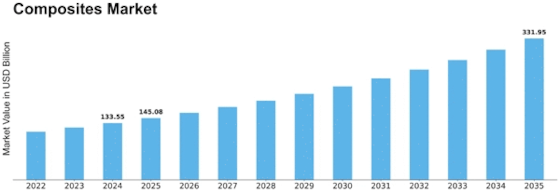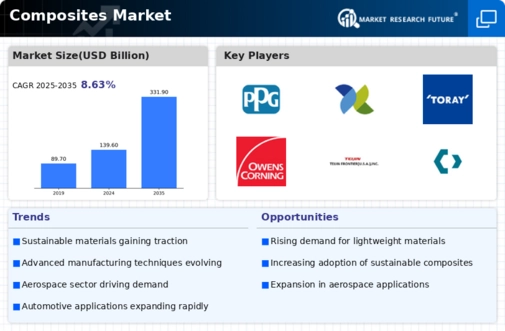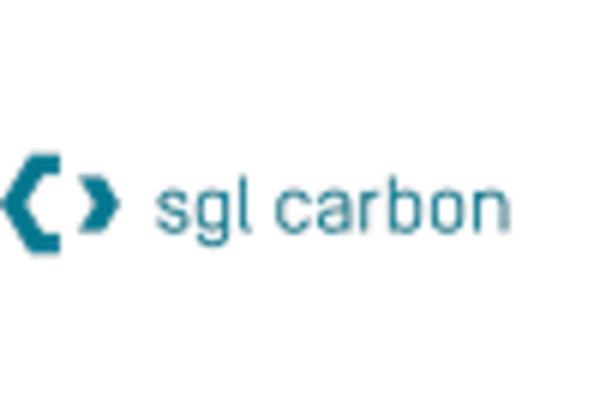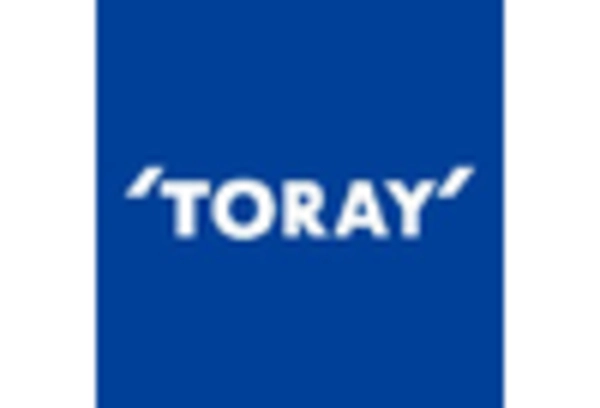Glass Fiber
Carbon Fiber
Others
Thermoplastic Composites
Thermosetting Composites
Layup Process
Injection Molding Process
Filament Winding Process
Pultrusion Process
Compression Molding Process
Others
Aerospace & Defense
Automotive & Transportation
Electrical & Electronics
Building & Construction
Wind Energy
Marine
Others
North America Composites by TypeGlass Fiber
Carbon Fiber
Others
North America Composites by Resin TypeThermoplastic Composites
Thermosetting Composites
North America Composites by ProcessLayup Process
Injection Molding Process
Filament Winding Process
Pultrusion Process
Compression Molding Process
Others
North America Composites by End-useAerospace & Defense
Automotive & Transportation
Electrical & Electronics
Building & Construction
Wind Energy
Marine
Others
US Composites by TypeGlass Fiber
Carbon Fiber
Others
US Composites by Resin TypeThermoplastic Composites
Thermosetting Composites
US Composites by ProcessLayup Process
Injection Molding Process
Filament Winding Process
Pultrusion Process
Compression Molding Process
Others
US Composites by End-useAerospace & Defense
Automotive & Transportation
Electrical & Electronics
Building & Construction
Wind Energy
Marine
Others
CANADA Composites by TypeGlass Fiber
Carbon Fiber
Others
Canada Composites by Resin TypeThermoplastic Composites
Thermosetting Composites
Canada Composites by ProcessLayup Process
Injection Molding Process
Filament Winding Process
Pultrusion Process
Compression Molding Process
Others
CANADA Composites by End-useAerospace & Defense
Automotive & Transportation
Electrical & Electronics
Building & Construction
Wind Energy
Marine
Automotive
Catalyst
Others
Europe Composites by TypeGlass Fiber
Carbon Fiber
Others
Europe Composites by Resin TypeThermoplastic Composites
Thermosetting Composites
Europe Composites by ProcessLayup Process
Injection Molding Process
Filament Winding Process
Pultrusion Process
Compression Molding Process
Others
Europe Composites by End-useAerospace & Defense
Automotive & Transportation
Electrical & Electronics
Building & Construction
Wind Energy
Marine
Others
Germany Outlook (USD Million, 2019-2030)
Germany Composites by TypeGlass Fiber
Carbon Fiber
Others
Germany Composites by Resin TypeThermoplastic Composites
Thermosetting Composites
North America Composites by ProcessLayup Process
Injection Molding Process
Filament Winding Process
Pultrusion Process
Compression Molding Process
Others
Germany Composites by End-useAerospace & Defense
Automotive & Transportation
Electrical & Electronics
Building & Construction
Wind Energy
Marine
Others
France Composites by TypeGlass Fiber
Carbon Fiber
Others
France Composites by Resin TypeThermoplastic Composites
Thermosetting Composites
France Composites by ProcessLayup Process
Injection Molding Process
Filament Winding Process
Pultrusion Process
Compression Molding Process
Others
France Composites by End-useAerospace & Defense
Automotive & Transportation
Electrical & Electronics
Building & Construction
Wind Energy
Marine
Others
UK Composites by TypeGlass Fiber
Carbon Fiber
Others
UK Composites by Resin TypeThermoplastic Composites
Thermosetting Composites
UK Composites by ProcessLayup Process
Injection Molding Process
Filament Winding Process
Pultrusion Process
Compression Molding Process
Others
UK Composites by End-useAerospace & Defense
Automotive & Transportation
Electrical & Electronics
Building & Construction
Wind Energy
Marine
Others
ITALY Composites by TypeGlass Fiber
Carbon Fiber
Others
Italy Composites by Resin TypeThermoplastic Composites
Thermosetting Composites
Italy Composites by ProcessLayup Process
Injection Molding Process
Filament Winding Process
Pultrusion Process
Compression Molding Process
Others
ITALY Composites by End-useAerospace & Defense
Automotive & Transportation
Electrical & Electronics
Building & Construction
Wind Energy
Marine
Others
Spain Composites by TypeGlass Fiber
Carbon Fiber
Others
Spain Composites by Resin TypeThermoplastic Composites
Thermosetting Composites
Spain Composites by ProcessLayup Process
Injection Molding Process
Filament Winding Process
Pultrusion Process
Compression Molding Process
Others
Spain Composites by End-useAerospace & Defense
Automotive & Transportation
Electrical & Electronics
Building & Construction
Wind Energy
Marine
Others
Rest Of Europe Composites by TypeGlass Fiber
Carbon Fiber
Others
Rest Of Europe Composites by Resin TypeThermoplastic Composites
Thermosetting Composites
Rest Of Europe Composites by ProcessLayup Process
Injection Molding Process
Filament Winding Process
Pultrusion Process
Compression Molding Process
Others
REST OF EUROPE Composites by End-useAerospace & Defense
Automotive & Transportation
Electrical & Electronics
Building & Construction
Wind Energy
Marine
Others
Asia-Pacific Composites by TypeGlass Fiber
Carbon Fiber
Others
Asia-Pacific Composites by Resin TypeThermoplastic Composites
Thermosetting Composites
Asia-Pacific Composites by ProcessLayup Process
Injection Molding Process
Filament Winding Process
Pultrusion Process
Compression Molding Process
Others
Asia-Pacific Composites by End-useAerospace & Defense
Automotive & Transportation
Electrical & Electronics
Building & Construction
Wind Energy
Marine
Others
China Outlook (USD Million, 2019-2030)
China Composites by TypeGlass Fiber
Carbon Fiber
Others
China Composites by Resin TypeThermoplastic Composites
Thermosetting Composites
China Composites by ProcessLayup Process
Injection Molding Process
Filament Winding Process
Pultrusion Process
Compression Molding Process
Others
China Composites by End-useAerospace & Defense
Automotive & Transportation
Electrical & Electronics
Building & Construction
Wind Energy
Marine
Others
Japan Composites by TypeGlass Fiber
Carbon Fiber
Others
Japan Composites by Resin TypeThermoplastic Composites
Thermosetting Composites
Japan Composites by ProcessLayup Process
Injection Molding Process
Filament Winding Process
Pultrusion Process
Compression Molding Process
Others
Japan Composites by End-useAerospace & Defense
Automotive & Transportation
Electrical & Electronics
Building & Construction
Wind Energy
Marine
Others
India Composites by TypeGlass Fiber
Carbon Fiber
Others
India Composites by Resin TypeThermoplastic Composites
Thermosetting Composites
India Composites by ProcessLayup Process
Injection Molding Process
Filament Winding Process
Pultrusion Process
Compression Molding Process
Others
India Composites by End-useAerospace & Defense
Automotive & Transportation
Electrical & Electronics
Building & Construction
Wind Energy
Marine
Others
Australia Composites by TypeGlass Fiber
Carbon Fiber
Others
Australia Composites by Resin TypeThermoplastic Composites
Thermosetting Composites
Australia Composites by ProcessLayup Process
Injection Molding Process
Filament Winding Process
Pultrusion Process
Compression Molding Process
Others
Australia Composites by End-useAerospace & Defense
Automotive & Transportation
Electrical & Electronics
Building & Construction
Wind Energy
Marine
Others
Rest of Asia-Pacific Composites by TypeGlass Fiber
Carbon Fiber
Others
Rest Of Asia-Pacific Composites by Resin TypeThermoplastic Composites
Thermosetting Composites
Rest Of Asia-Pacific Composites by ProcessLayup Process
Injection Molding Process
Filament Winding Process
Pultrusion Process
Compression Molding Process
Others
Rest of Asia-Pacific Composites by End-useAerospace & Defense
Automotive & Transportation
Electrical & Electronics
Building & Construction
Wind Energy
Marine
Others
Latin America Composites by TypeGlass Fiber
Carbon Fiber
Others
Latin America Composites by Resin TypeThermoplastic Composites
Thermosetting Composites
Latin America Composites by ProcessLayup Process
Injection Molding Process
Filament Winding Process
Pultrusion Process
Compression Molding Process
Others
Latin America Composites by End-useAerospace & Defense
Automotive & Transportation
Electrical & Electronics
Building & Construction
Wind Energy
Marine
Others
Mexico Composites by TypeGlass Fiber
Carbon Fiber
Others
Mexico Composites by Resin TypeThermoplastic Composites
Thermosetting Composites
Mexico Composites by ProcessLayup Process
Injection Molding Process
Filament Winding Process
Pultrusion Process
Compression Molding Process
Others
Mexico Composites by End-useAerospace & Defense
Automotive & Transportation
Electrical & Electronics
Building & Construction
Wind Energy
Marine
Others
Brazil Outlook (USD Million, 2019-2030)
Brazil Composites by TypeGlass Fiber
Carbon Fiber
Others
Brazil Composites by Resin TypeThermoplastic Composites
Thermosetting Composites
Brazil Composites by ProcessLayup Process
Injection Molding Process
Filament Winding Process
Pultrusion Process
Compression Molding Process
Others
Brazil Composites by End-useAerospace & Defense
Automotive & Transportation
Electrical & Electronics
Building & Construction
Wind Energy
Marine
Others
Argentina Outlook (USD Million, 2019-2030)
Argentina Composites by TypeGlass Fiber
Carbon Fiber
Others
Argentina Composites by Resin TypeThermoplastic Composites
Thermosetting Composites
Argentina Composites by ProcessLayup Process
Injection Molding Process
Filament Winding Process
Pultrusion Process
Compression Molding Process
Others
Argentina Composites by End-useAerospace & Defense
Automotive & Transportation
Electrical & Electronics
Building & Construction
Wind Energy
Marine
Others
Rest of Latin America Outlook (USD Million, 2019-2030)
Rest of Latin America Composites by TypeGlass Fiber
Carbon Fiber
Others
Rest Of Latin America Composites by Resin TypeThermoplastic Composites
Thermosetting Composites
Rest of Latin America Composites by ProcessLayup Process
Injection Molding Process
Filament Winding Process
Pultrusion Process
Compression Molding Process
Others
Rest of Latin America Composites by End-useAerospace & Defense
Automotive & Transportation
Electrical & Electronics
Building & Construction
Wind Energy
Marine
Others
Middle East & Africa Composites by TypeGlass Fiber
Carbon Fiber
Others
Middle East & Africa Composites by Resin TypeThermoplastic Composites
Thermosetting Composites
Middle East & Africa Composites by ProcessLayup Process
Injection Molding Process
Filament Winding Process
Pultrusion Process
Compression Molding Process
Others
Middle East & Africa Composites by End-useAerospace & Defense
Automotive & Transportation
Electrical & Electronics
Building & Construction
Wind Energy
Marine
Others
GCC Countries Composites by TypeGlass Fiber
Carbon Fiber
Others
GCC Countries Composites by Resin TypeThermoplastic Composites
Thermosetting Composites
GCC Countries Composites by ProcessLayup Process
Injection Molding Process
Filament Winding Process
Pultrusion Process
Compression Molding Process
Others
GCC Countries Composites by End-useAerospace & Defense
Automotive & Transportation
Electrical & Electronics
Building & Construction
Wind Energy
Marine
Others
South Africa Outlook (USD Million, 2019-2030)
South Africa Composites by TypeGlass Fiber
Carbon Fiber
Others
South Africa Composites by Resin TypeThermoplastic Composites
Thermosetting Composites
South Africa Composites by ProcessLayup Process
Injection Molding Process
Filament Winding Process
Pultrusion Process
Compression Molding Process
Others
South Africa Composites by End-useAerospace & Defense
Automotive & Transportation
Electrical & Electronics
Building & Construction
Wind Energy
Marine
Other End-uses
Rest of Middle East & Africa Outlook (USD Million, 2019-2030)
Rest of Middle East & Africa Composites by TypeGlass Fiber
Carbon Fiber
Others
Rest Of Middle East & Africa Composites by Resin TypeThermoplastic Composites
Thermosetting Composites
Rest Of Middle East & Africa Composites by ProcessLayup Process
Injection Molding Process
Filament Winding Process
Pultrusion Process
Compression Molding Process
Others
Rest of Middle East & Africa Composites by End-useAerospace & Defense
Automotive & Transportation
Electrical & Electronics
Building & Construction
Wind Energy
Marine
Others


















Leave a Comment